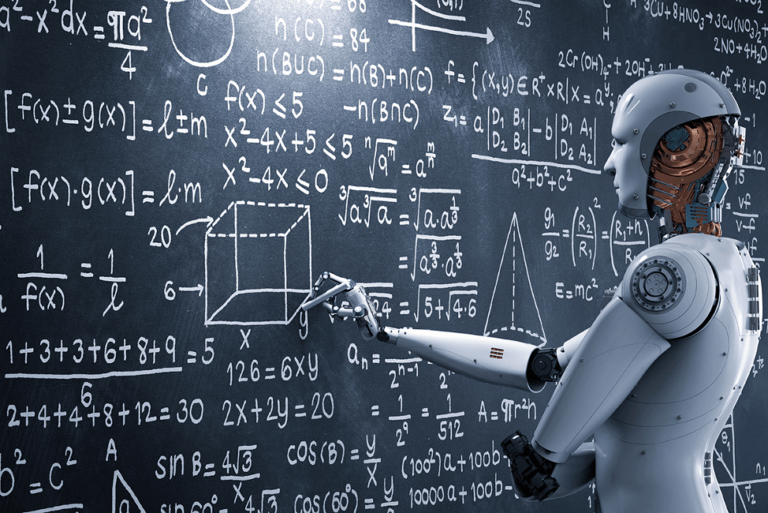Coined back in 1956, the term Artificial Intelligence (AI) has become the heart of every discussion – national or global – pertaining to technology. Yet, the full potential of AI is still under scrutiny. And rightfully so.
Artificial Intelligence – indeed is the biggest technological advancement in the history of humanity since Electricity 125 years ago. The technology ecosystem has evolved faster in the past few years than it did in last few decades. The rise of key trends like easy access to huge computation power & storage, the surge in consumer-generated data, the connected world facilitating collection of consumer data, and the advancement in machine learning algorithms & tools – open source & enterprise both – allowing us to utilize the three trends to greater effect. The underlying promise of artificial intelligence has been to transform the world we live in and transform it for good.
The significant rise of AI in our daily lives could be attributed to the explosion & availability of data across consumers/businesses/etc.digital transformation the modern businesses are going through. They are creating new business avenues to add value to their consumers and generate alternative revenue models for themselves. The key to the legacy modernization is the huge amount of data that is being generated regularly. Our growing interaction with machines results in the generation of almost 2.5 quintillion bytes of data every day. And the businesses are utilizing all this data to create more efficient and human-like AI solutions (Google Maps, Alexa, etc.). The days of the legacy system are limited in the commercial world; they are getting either replaced or getting broken completely.
With its cognitive applications, artificial intelligence has already started transforming industries like retail, healthcare, manufacturing, financial services, and transport, by bringing in new and innovative solutions to save cost, maximize efficiency, and save human lives. AI, a term that was limited to sci-fi fictions a little while ago, is now a critical part of our everyday life. We are surrounded by AI systems from our phones through voice assistants like Siri, Google, Cortana, & Alexa to the self-driving cars from Tesla.
Some noteworthy examples of AI across different business verticals include the collaboration of Pittsburgh-based Argo AI and Ford Motor Company in NASCAR racing where they are expanding deep learning to develop safer cars in the world of auto racing. Using its deep learning neural network Argo AI was able to identify a specific car that is on the cusp of malfunction during a race from a real-time dataset of thousands of car images to avoid serious issues like fires or malfunctioning that can put the driver in danger.
In the field of entertainment, we all have experience the Netflix’s Machine Learning Workflow wherein the company can predict what you want to watch based upon your viewing data. While, the healthcare industry uses AI to develop applications which can help boost the functioning of brain like the implants and nanobots for improving the oxygen flow in the body.
AI is making huge strides into the beauty and makeup industry as well with brands such as Proven, L’Oréal, Dior, and Estée Lauder embracing AI, VR (Virtual Reality), and AR (Augmented Reality) for product development. Some of the real-life uses cases can be seen in the form of a smart hairbrush, using sensors for detecting hair quality and then recommending hair products accordingly and AI-based skin assessment.
With the aforementioned examples, we can see that industries have started embracing AI for their businesses. However, as per the enterprise leaders, the adoption is yet to pick up the desired pace. Despite the disruptive opportunities and economic benefits, AI has to offer, there still are few challenges that are hindering the AI adoption.
The biggest challenges organizations face include, shortage of Data & Analytics Leaders to empower the AI adoption for their businesses. We just do not have enough D&A leaders with a clear AI adoption agenda to fuel the adoption, add to that scarcity of AI specific talent and you are looking at a huge roadblock right at the start of the journey. Even the enterprise leaders that possess the expertise of AI adoption are limited by the dearth of data, poor technological infrastructure, industry/business specific end-to-end constraints, and at times just absence of a strong AI adoption strategy. In some rare cases, the AI adoption suffers from prejudice over the data-based decision regarding AI, and reluctance to move away from legacy systems to AI-based systems.
While each of those challenges looks daunting than the other one, each one of them can be overcome. And the good thing is that most of it can be done in house. There are a plethora of educational material & case studies involving AI and automation technologies available to create in house AI leaders & talent. Organizations need to create an AI-first ecosystem to upskill and re-skill their talent pool. The top management needs to invest in AI leaders not only financially, but also culturally.
We are on the verge of the 4thindustrial revolution, which by the looks if it will be shaped by the disruptive technologies such as AI (artificial intelligence), ML (machine learning), deep learning, data & analytics etc. The modern organizations have started adopting advanced technologies like robotic process automation (RPA), machine learning, artificial intelligence, data analytics, and cognitive computing to create an automated world.
The influx of technologies like the AI, Internet of things (IoT), 5G, BlockChain, and the cloud leaves the onus on us to be prepared for them. As per a recently published report, AI will create around 38.2 million new jobs by the year 2030 around the world to influence the global economy and allowing us to be a part of the transformation that humanity is going through. It’s our chance now to be a part of the transformation or just be an onlooker.

